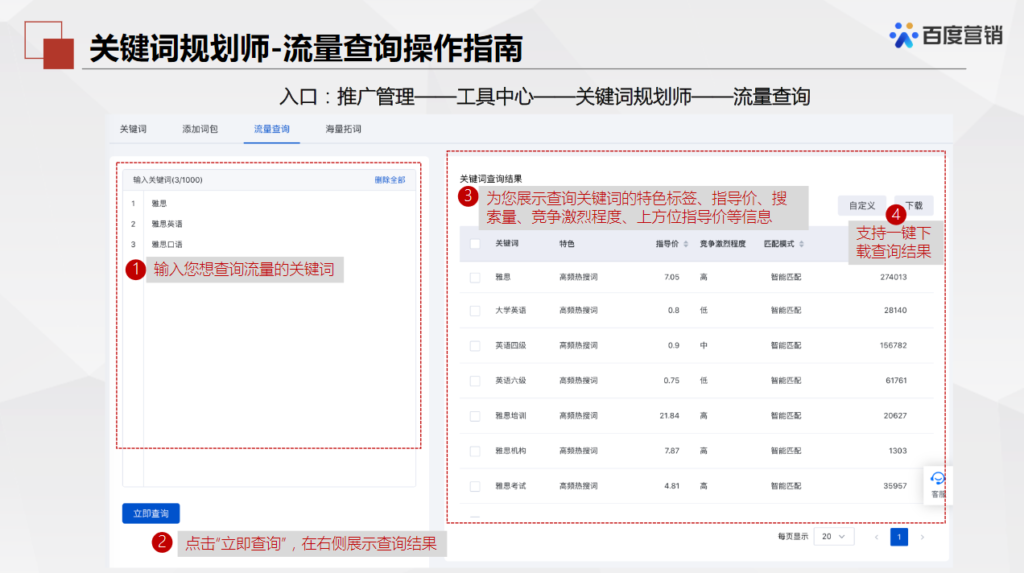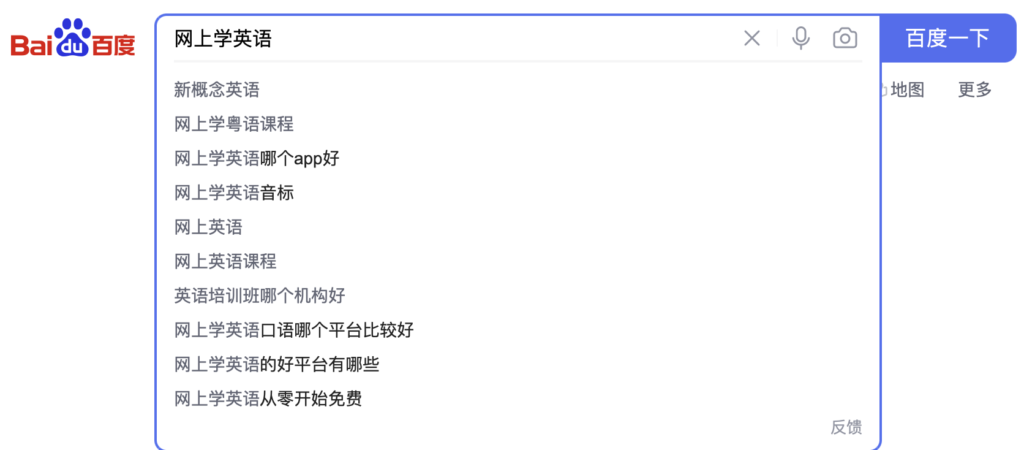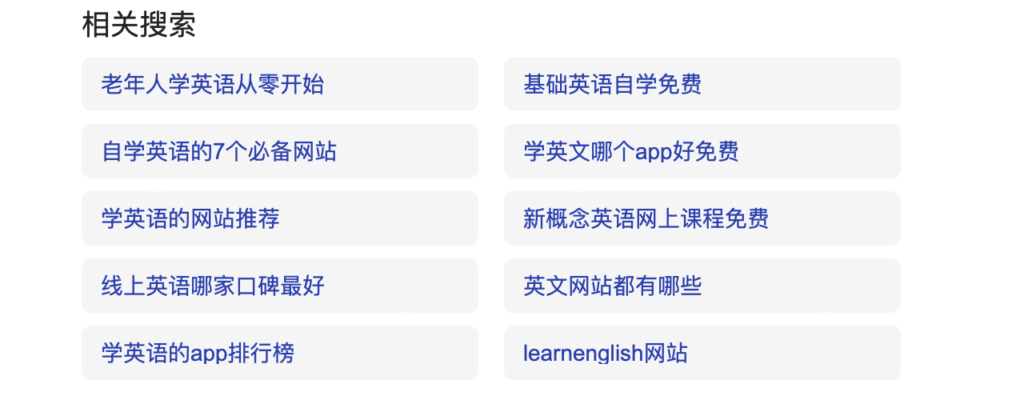In the ever-evolving world of digital marketing, search engine optimization (SEO) remains a critical strategy for businesses seeking to increase their online visibility. In China, Baidu is the dominant search engine. If you’re looking to tap into the vast Chinese market, understanding how to perform effective keyword research for Baidu SEO is paramount. In this article, we will explore the intricacies of Baidu keyword research, providing you with practical examples to help you optimize your web presence for the Chinese audience.

Typically, the basic steps of keyword research include:
- Identify Your Niche and Target Audience
- Brainstorm a list of keywords
- Use tools and other methods to expand the number of keywords
- Analyze keyword list for demand, value, and difficulty
- Prioritize and choose your targeted keywords based on these criteria
Let’s take a look at these steps in a bit more detail.
Keyword Research for Baidu SEO
1.Identify Your Niche and Target Audience
Before you start researching keywords, define your niche and understand your target audience’s preferences and pain points. This will lay the foundation for your keyword research strategy.
2.Brainstorm a list of keywords
At the start of the keyword research process, the first step is to brainstorm some keywords based on the current understanding of the site being optimized. The goal is to answer the question “Which queries would our target demographic use to find our content?”
In order to brainstorm keywords from multiple perspectives, this process can often benefit from involving people outside of the SEO team, such members from sales or customer service department, existing customers and clients, or others in your key demographic. The list of keyword doesn’t have to be huge, but it should cover all of the business objectives the website is trying to achieve.
3.Use tools and other methods to expand the number of keywords
–Use Baidu Keyword Planner.
Baidu offers a free tool, the Baidu Keyword Planner, similar to Google’s Keyword Planner. It provides data on search volume, competition, and suggested keywords. To access this tool, you’ll need a Baidu PPC account. If you want to create your Baidu PPC account, just contact us for help. We can help create and manage Baidu PPC account.

–Baidu Search Drop-down and Related Search
When you type in your keyword in the search box, the dropdown menu will provide a list of predicted search queries. If your keyword is “网上学英语(learn English online)”, you can find more related keywords on Baidu search drop-down like below screenshot.

Related Searches – There’s a list of keywords given at the bottom of a search results page. It’s generally placed right on top of the page selector. Here’s a list of related keywords at the bottom of the page:

–Competitor Analysis: Analyze your competitors to identify the keywords they are ranking for.
–Long-Tail Keywords: Focus on long-tail keywords to target specific user intents. Baidu users often search using longer phrases, so optimizing for these can yield better results. For example, if you’re in the smartphone market, target long-tail keywords like “中国性价比较高的安卓智能手机(better budget Android smartphones in China).”
–Use Chinese Synonyms: Baidu is known for understanding synonyms and related words well. Include Chinese synonyms of your target keywords within your content naturally to increase your chances of ranking. Suppose your target keyword is “健康饮食(healthy diet).” You can consider including the following synonyms and related terms naturally within your content:
- 营养饮食 (Nutritious eating)
- 健康的饮食方式 (Eating for good health)
- 饮食习惯对健康的影响 (Impact of dietary habits on health)
- 营养均衡 (Balanced nutrition)
- 膳食搭配 (Dietary choices)
- 营养与健康 (Nutrition and well-being)
- 饮食建议 (Dietary recommendations)
4.Analyze keyword list for demand, value, and difficulty
Analyzing a keyword list for demand, value, and difficulty is a crucial step in any SEO or content marketing strategy. By evaluating these factors, you can identify the keywords that are worth targeting and are more likely to bring traffic and conversions to your website. Common metrics to identify keywords’ search demand include:
Keyword Demand:
–Search Volume: This is the most basic indicator of keyword demand. Use keyword research tools like Baidu Keyword Planner to find the average monthly search volume for each keyword. Higher search volume indicates higher demand.
–Trends: Examine historical search trends for the keywords. Seasonal or trending keywords may have fluctuating demand throughout the year.
Keyword Value:
- Commercial Intent: Keywords with high commercial intent are valuable because they are more likely to convert into sales or leads. Look for keywords that include words like “buy,” “price,” “discount,” or “review.”
- Relevance to Your Business: Focus on keywords that are highly relevant to your business or content. Even if a keyword has high value in general, if it’s not related to your offerings, it won’t bring you the right audience.
- Cost-Per-Click (CPC): If you are running paid advertising campaigns, analyze the CPC for keywords in Baidu PPC platform. High CPCs often indicate that advertisers find those keywords valuable.
Keyword Difficulty:
- SERP Analysis: Perform a search engine results page (SERP) analysis for each keyword. Examine the top-ranking pages and assess their authority, content quality, and backlink profile.
- Competitor Strength: Evaluate your competition’s strength in your niche. If you’re in a highly competitive industry, it may be more challenging to rank for certain keywords. For example you are selling Online English Courses and your niche is Online language learning. Target Audience is Individuals looking to learn English. Competitor analysis may reveal that your competitors are ranking for keywords like “在线学英文(learn English online).” To stand out, focus on long-tail keywords like “初学者线上英文课程 ( English lessons for beginners)” to cater to a specific audience. Additionally, use synonyms like “线上学英语价格 (price for study English online” to broaden your reach.
5.Prioritize and choose your target keywords following these rules
By this step, you will now have a list of keywords with demand, value, and competitive metrics. Use this criteria to pick target keywords and prioritize efforts. Not all keywords will meet all of the following criteria, and it’s not an exact science. Every site will need a different strategy. Ideally, target keywords should be:
- Popular – High Search Volume
- Valuable – High conversion rate, high value, good search intent, and highly relevant to our content
- Low Competition – The site being optimized for is stronger or almost as strong as sites already ranking for these keywords
- Available – Very few non-organic results occupying top positions on the SERP
Mastering Baidu SEO through effective keyword research is essential for success in the Chinese online market. Understanding Baidu’s ranking factors and incorporating cultural and linguistic nuances into your SEO strategy will significantly boost your visibility. By identifying your niche, understanding your target audience, and leveraging tools like the Baidu Keyword Planner, you can create a robust keyword strategy that ensures your content ranks well on Baidu. And since it is so professional work requires high technique skills for Baidu SEO, you must have a SEO expert to help you about it. If you are looking for Baidu SEO expert, do not hesitate to contact us Deep Digital China for strong support.


Pingback: Improve Baidu Keyword Rankings: Ultimate Guide 2024 | Deep Digital China